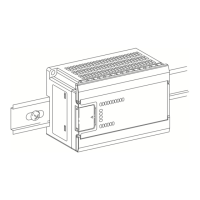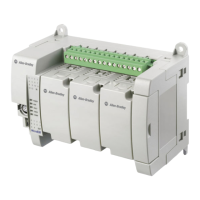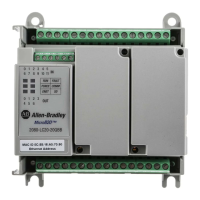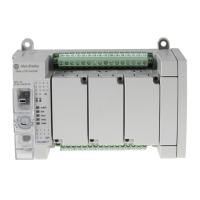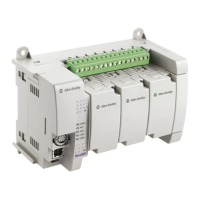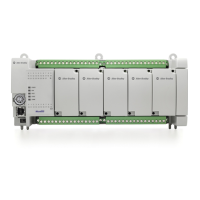Publication 1763-RM001B-EN-P - April 2007
Communications Instructions 357
2. At the next end of scan, REF, or SVC instruction, the controller
determines if it should examine the communications queue for
another instruction. The controller bases its decision on the state of
the channel’s Communication Servicing Selection (CSS) and Message
Servicing Selection (MSS) bits, the network communication requests
from other nodes, and whether previous message instructions are
already in progress. If the controller determines that it should not
access the queue, the message instruction remains as it was. Either
the EN and EW bits remain set (1) or only the EN bit is set (1) until
the next end of scan, REF, or SVC instruction.
If the controller determines that it has an instruction in the queue, it
unloads the communications queue entries into the message buffers
until all four message buffers are full. If an invalid message is
unloaded from the communications queue, the ER bit in the MG file
is set (1), and a code is placed in the MG file to inform you of an
error. When a valid message instruction is loaded into a message
buffer, the EN and EW bits for this message are set (1).
The controller then exits the end of scan, REF, or SVC portion of the
scan. The controller’s background communication function sends
the messages to the target nodes specified in the message
instruction. Depending on the state of the CSS and MSS bits, you can
service up to four active message instructions per channel at any
given time.
3. If the target node successfully receives the message, it sends back an
acknowledge (ACK). The ACK causes the processor to clear (0) the
EW bit and set (1) the ST bit. The target node has not yet examined
the packet to see if it understands your request.
Once the ST bit is set (1), the controller waits for a reply from the
target node. The target node is not required to respond within any
given time frame.
TIP
If the Target Node faults or power cycles during the
message transaction, you will never receive a reply.
This is why you should use a Message Timeout value
in your MSG instruction.
efesotomasyon.com - Allen Bradley,Rockwell,plc,servo,drive
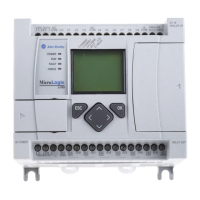
